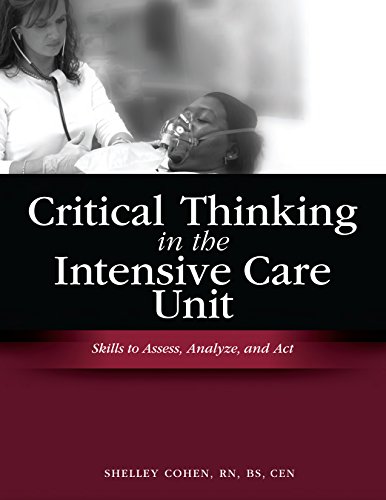About The Book
Critical thinking is essential to a nurse's success. Don't waste time and money developing your own critical thinking training program. Our top-notch...
Read more
experts have done the work for you! The complex, high-stress intensive care unit (ICU) is a difficult environment for new graduate and inexperienced nurses to enter and excel. However, it is imperative that nurses in this arena display critical thinking and possess high-levels of clinical judgment as they deal with the most vulnerable patients. Critical Thinking in the Intensive Care Unit: Skills to Assess, Analyze, and Act is an easy-to-read resource that explains the principles of critical thinking and how to encourage nurses to use critical thinking methods. It includes a CD-ROM packed with all the book's useful tools that you can immediately implement at your facility. Maximize fast, accurate judgment. Minimize stress. This essential book covers how to lead classroom sessions for new graduate nurses and experienced nurses on developing critical thinking skills in the ICU, including successful classroom processes and learning strategies. It includes tools, worksheets, and handouts to supplement the classroom learning. Examples of critical thinking skills that can be taught include: - Developing prioritization skills - Knowing when to call the physician - Producing effective documentation - Anticipating worst-case scenarios - Responding to abnormal findings - Handling unexpected patient outcomes Benefits for both novice and seasoned professional nurses Learn how to develop a culture of critical thinking, from coaching new grads through bad patient outcomes to encouraging experienced nurses by setting expectations. You also get completely customizable resources such as intensive care unit-specific assessment tools, case studies, worksheets, and sample questions. Take a look at the table of contents: Introduction: Critical thinking in the intensive care unit Chapter 1: Defining critical thinking Chapter 2: New graduate nurses and critical thinking Chapter 3: The critical thinking classroom Chapter 4: Orientation: Bringing critical thinking to the clinical environment Chapter 5: Nursing practice that promotes and motivates critical thinking Chapter 6: Novice to expert: Setting realistic expectations for critical thinking Chapter 7: Applying critical thinking to nursing documentation Chapter 8: Relating critical thinking to its higher purpose Chapter 9: Resources and tools
Hide more

